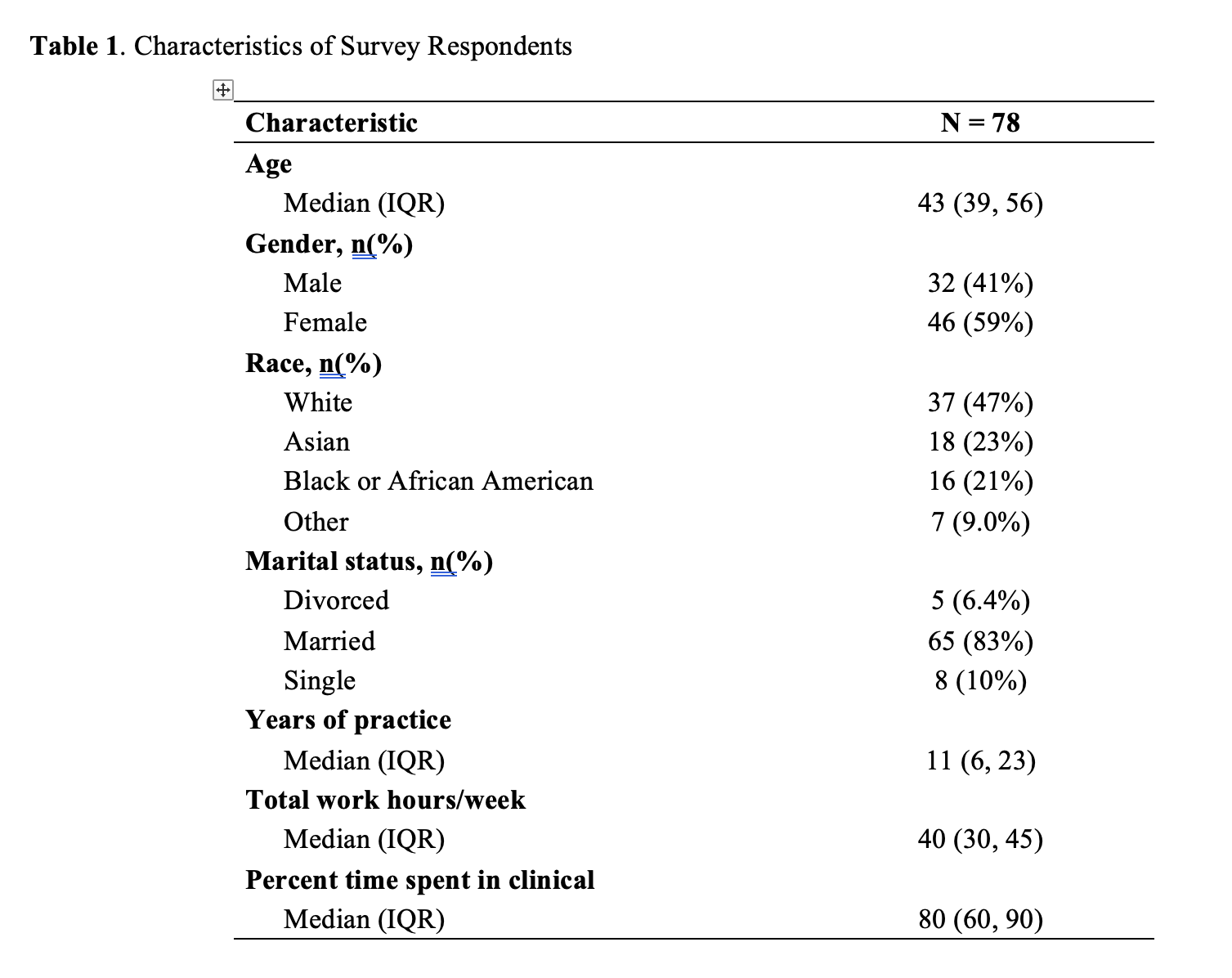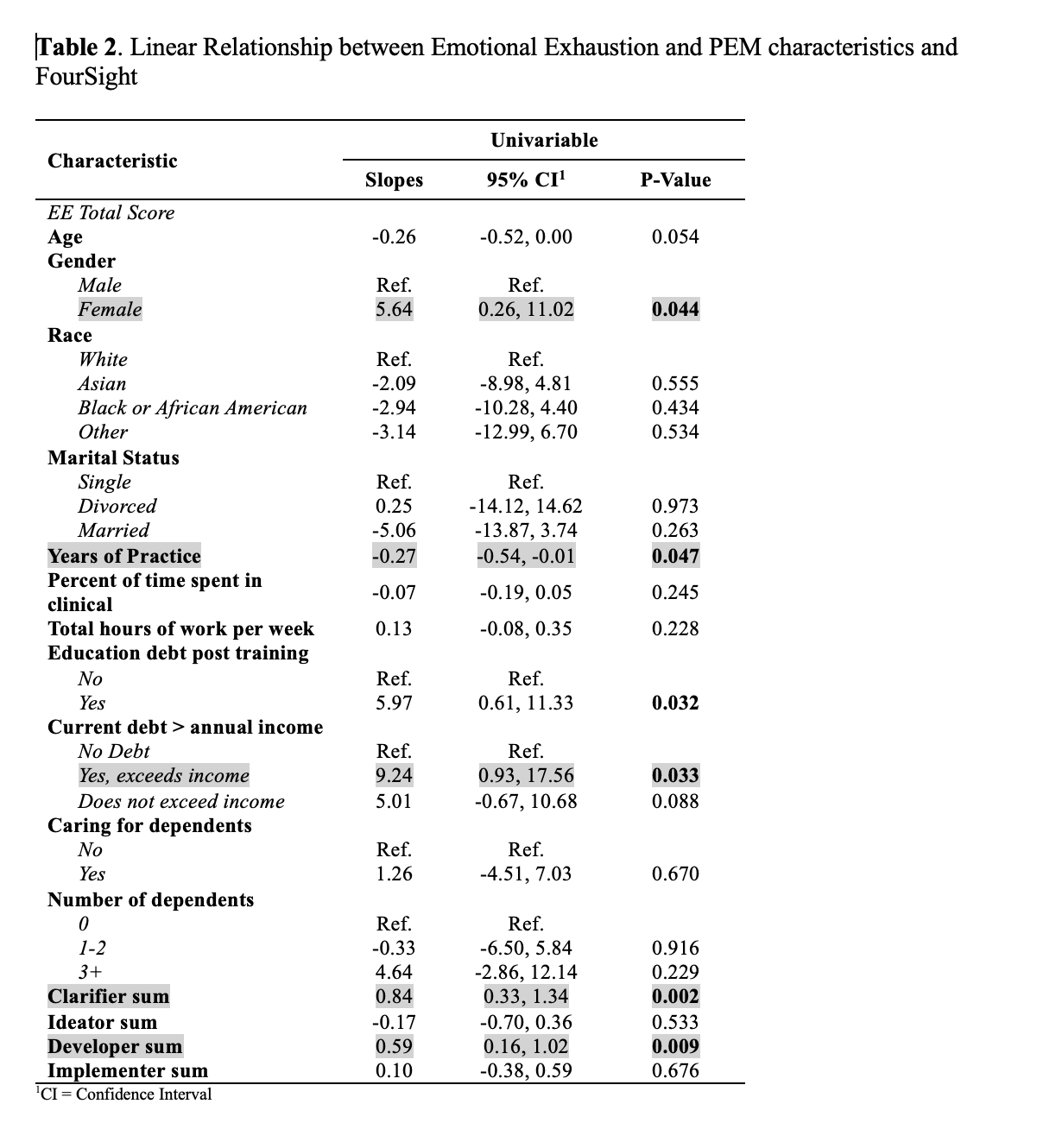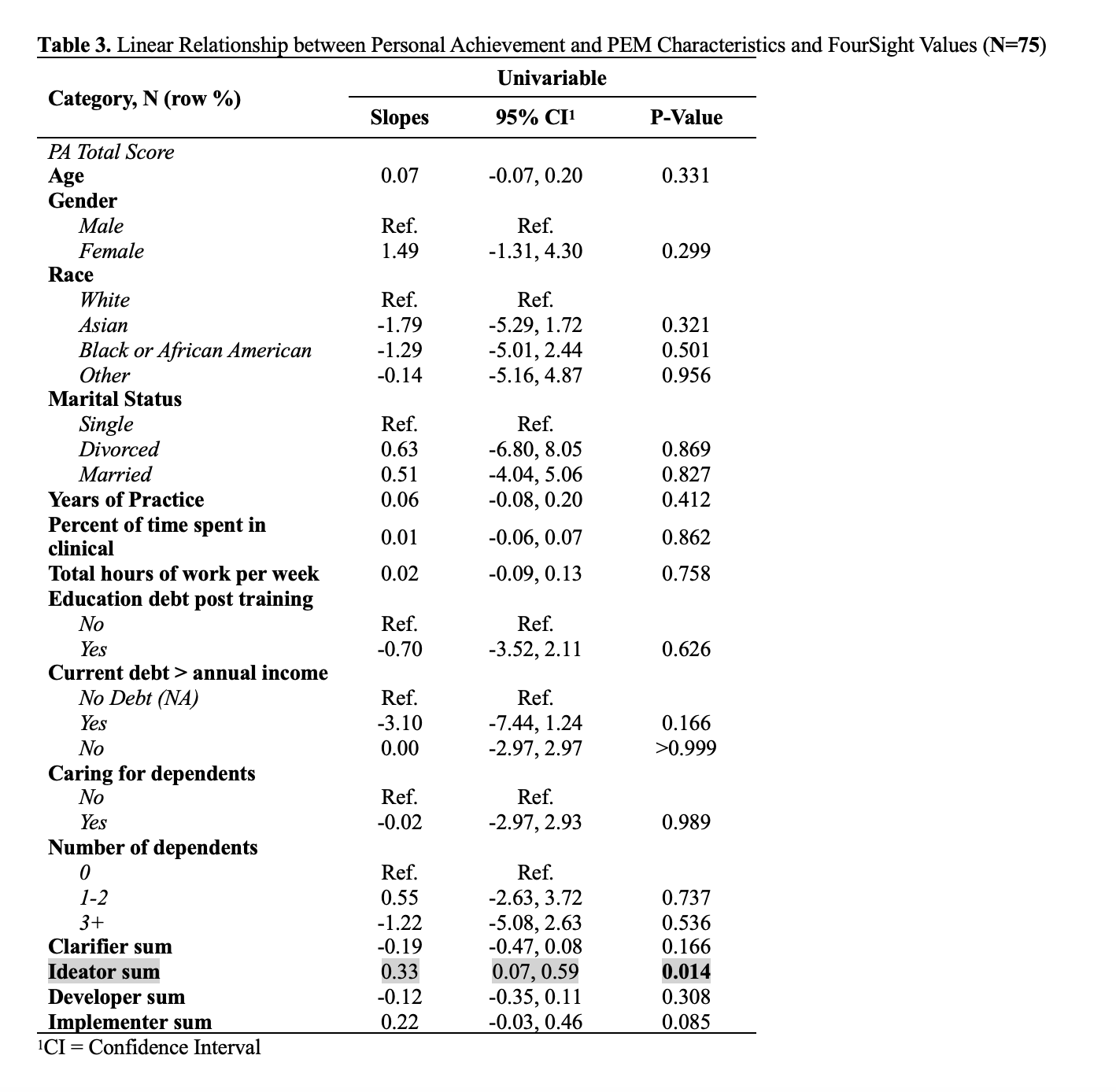Emergency Medicine: All Areas
Emergency Medicine 8
385 - The Creative Mindset of Pediatric Emergency Physicians as a Predictor of Burnout: An Exploratory Study
Publication Number: 385.212

Naghma S. Khan, MD, MS (she/her/hers)
Director, Data Analytics
Emory University School of Medicine
ATLANTA, Georgia, United States
Presenting Author(s)
Background: Physician burnout (BO) is at an all-time high. Pediatric Emergency Medicine physicians (PEM) work in a volatile, uncertain, complex and ambiguous environment with ill-defined and poorly structured problems. Creative thinking and creative problem solving (CPS) enable individuals to respond effectively to complex problems. Heretofore, no study has examined the relationship between physicians’ CPS preferences and risk of BO.
Objective: This study tested the degree to which a PEMs CPS mindset (their preference to Clarify, Ideate, Develop, and Implement) predicted BO.
Design/Methods: This is a prospective, non-experimental, cross-sectional empirical study involving PEMs on active staff in a large hospital system. BO was measured using the Maslach Burnout Index (MBI) and individual CPS preference using FourSight (FS). Demographic data was also collected. The MBI is a 22-item questionnaire that measures BO in three dimensions: Emotional Exhaustion (EE), Depersonalization (DP) and Personal Accomplishment (PA). FS is a 36-item questionnaire that measures CPS preference for Clarifying, Ideating, Developing, and Implementing. Data was analyzed using descriptive statistics, linear and multivariate regression analysis. IBM SPSS Version 28.0.0.0 and RStudio 4.2.1 were used to analyze the data. Significance was set at p < 0.05 for each test.
Results:
Of the 88 PEM’s contacted, 75 (85.2%) completed the 3 surveys. Median age: 43; Female: 59%; White: 47% (Table 1). The Clarifier mindset (slope: 0.84, 95% CI [0.33, 1.34], p= 0.002) and the Developer mindset (slope: 0.59, 95% CI [0.16, 1.02], p= 0.009) correlated with risk of EE (Table 2). These results held on multi-regression analysis with EE as the dependent variable and years of practice, total hours worked/week, gender, and educational debt as predictors. No relationship was found between FS and DP. Interestingly, an Ideator mindset show statistically significant correlation (slope: 0.33, 95%CI [0.07, 0.59], p= 0.014) with a positive sense of PA. These findings held true when adjusted for years of practice and total hours worked/week (Table 3).
Conclusion(s):
Results of this study show that the creative mindset is a powerful predictor of BO, showing even stronger predictive value than hours worked per week and years in practice. Given the fact that the field of creative thinking has well-established and empirically proven training methods, the predictive relationship found between CPS preferences and BO begs the question as to whether training in applied creative-thinking methods might be useful in mitigating BO among PEM’s. 


